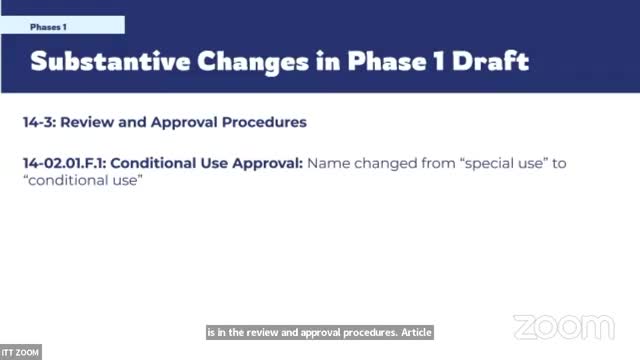Santa Fe proposes major zoning changes to boost development
October 18, 2024 | Santa Fe, Santa Fe County, New Mexico
This article was created by AI summarizing key points discussed. AI makes mistakes, so for full details and context, please refer to the video of the full meeting. Please report any errors so we can fix them. Report an error »

In a recent government meeting, officials discussed significant updates to zoning regulations aimed at modernizing building practices and enhancing housing affordability in Santa Fe. One of the key changes involves renaming \"special use\" to \"conditional use,\" a shift deemed largely semantic but aligned with common terminology in the planning and development sectors.
A notable proposal includes increasing permitted building heights by 2 to 3 feet across residential and non-residential districts, allowing for heights up to 26 feet in residential areas and 38 feet in non-residential zones. This adjustment is intended to accommodate modern construction needs, such as improved ventilation and the integration of green roofs, which have become increasingly popular in sustainable building practices. Officials emphasized that these changes could also help reduce construction costs by allowing for more efficient building designs.
The meeting also introduced a new \"Parks and Open Space District,\" aimed at providing better zoning tools for the protection of parks and open spaces, which had previously been overlooked in the zoning framework. Additionally, the requirement for a development plan approval for high-density residential projects—those exceeding 10 dwelling units per acre—has been eliminated, streamlining the approval process.
Further revisions included the removal of outdated overlay districts and the introduction of new definitions for housing types, such as duplexes and triplexes, to clarify existing policies and encourage diverse housing options. The meeting also addressed updates to parking requirements, enhancing flexibility for developers and incorporating new standards for bicycle and electric vehicle parking.
Overall, these changes reflect a concerted effort by city officials to adapt zoning regulations to contemporary needs, promote sustainable development, and address the ongoing housing affordability crisis in Santa Fe. The discussions are part of a broader review process that will continue to evolve in subsequent phases.
A notable proposal includes increasing permitted building heights by 2 to 3 feet across residential and non-residential districts, allowing for heights up to 26 feet in residential areas and 38 feet in non-residential zones. This adjustment is intended to accommodate modern construction needs, such as improved ventilation and the integration of green roofs, which have become increasingly popular in sustainable building practices. Officials emphasized that these changes could also help reduce construction costs by allowing for more efficient building designs.
The meeting also introduced a new \"Parks and Open Space District,\" aimed at providing better zoning tools for the protection of parks and open spaces, which had previously been overlooked in the zoning framework. Additionally, the requirement for a development plan approval for high-density residential projects—those exceeding 10 dwelling units per acre—has been eliminated, streamlining the approval process.
Further revisions included the removal of outdated overlay districts and the introduction of new definitions for housing types, such as duplexes and triplexes, to clarify existing policies and encourage diverse housing options. The meeting also addressed updates to parking requirements, enhancing flexibility for developers and incorporating new standards for bicycle and electric vehicle parking.
Overall, these changes reflect a concerted effort by city officials to adapt zoning regulations to contemporary needs, promote sustainable development, and address the ongoing housing affordability crisis in Santa Fe. The discussions are part of a broader review process that will continue to evolve in subsequent phases.
View full meeting
This article is based on a recent meeting—watch the full video and explore the complete transcript for deeper insights into the discussion.
View full meeting
